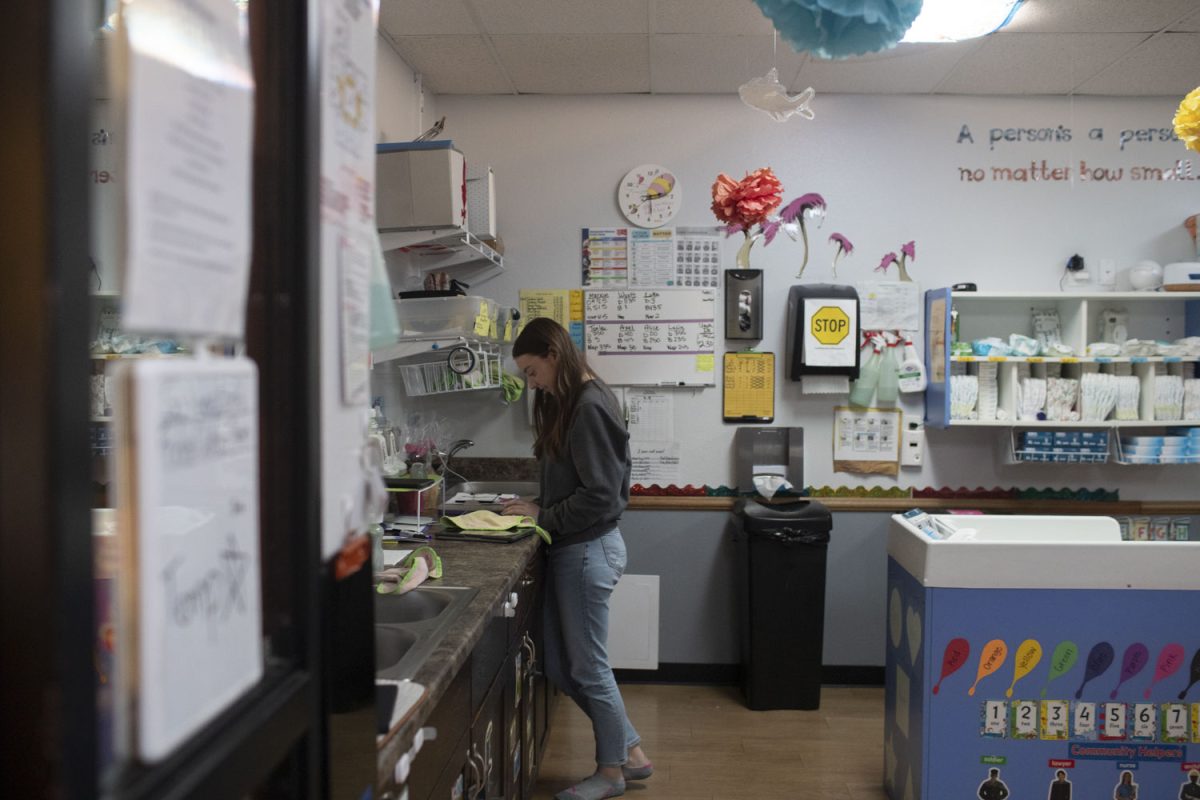For Emily Brandenburg, director of Lionheart Early Learning, working in a child care center has always been something she is passionate about.
Since becoming director four years ago, Brandenburg has seen multiple staffing shortages at the center. However, Lionheart’s numbers have since improved, preventing a shortage that would warrant a closure of classrooms or the center as a whole.
Located at 2717 Northgate Drive in Iowa City, Lionheart is working to retain more staff members by boosting staff morale, gifting coupon books to staff members at Christmas, offering free coffee, and even giving away tickets to Heartlanders hockey games, Brandenburg said.
However, across Iowa and much of the U.S., many understaffed child care centers are struggling to stay afloat.
According to a survey conducted by the National Association for the Education of Young Children, or NAEYC, 37 percent of centers experienced some form of a staffing shortage while 35 percent were unable to open classrooms in the state of Iowa in 2021.
Missie Forbes, executive director of 4Cs Community Coordinated Child Care, said historically, the child care profession does not pay well due to high turnover and low retention rates of staff members. The average wage reported in the NAEYC survey was between $12.68 and $14.97 per hour for classroom teachers and roughly $19.79 per hour for directors.
According to Forbes, the COVID-19 pandemic exacerbated this issue to the point where many classrooms in Iowa were forced to close and subsequently struggled to reopen.
“A lot of programs are toeing the line, and one person calling in sick can topple the whole entire structure,” Forbes said.
At Lionheart, Brandenburg has experienced the effects of having many staff members call in sick. To cope with low staff numbers, Brandenburg said she would go into the classroom herself to help out.
Currently, the Johnson County Child Care Wage Enhancement Program, funded by the American Rescue Plan Act, allows qualified staff a wage increase of $2 in an attempt to mitigate high turnover rates. Child care programs can apply for this funding given they meet eligibility requirements.
Brandenburg said in a child care center, there is a certain ratio of staff members to infants and children. Varying in age, there are four babies per staff member at Lionheart.
Iowa Administrative Code 109.8 requires centers to maintain this staff ratio with numbers varying depending on the children’s ages.
“We make sure that depending on how many kids are in the classroom, we have the necessary staff to meet that ratio,” Brandenburg said.
Laurie Nash, youth and family services manager for Johnson County Social Services, said staff retention has been particularly difficult and adds to the pressure of keeping doors open.
“There is a lot of pressure in child care, and it is not as compensated, I think, as other jobs, making it hard to recruit and retain staff,” Nash said.
According to data from the Iowa Association for the Education of Young Children, national turnover rates for child care range from 26 to 40 percent per year.
Nash said the financial challenges to keep a child care center open — including mortgage, rent, and utility payments — never change regardless of staffing numbers.
“When there is frequent staff turnover, there are empty classrooms, and when there are empty classrooms, there is less income coming in,” Nash said.
Brandenburg said staffing impacts the center itself, but it also makes it harder on the individuals who choose to continue working there. Many staff members’ breaks get shortened or they are required to take a later break than normal when a staff member calls in sick, Brandenburg said.
“This can be very daunting because working eight hours a day with eight toddlers, for example, is a lot, and sometimes we don’t have the staff to replace them,” Brandenburg said.
Nash said families are affected by this shortage as well. When there are fewer spots in child care centers, families have fewer choices on where to send their kids.
“They may end up choosing a center that is further away from their home or work, especially for families with infants,” Nash said.
Brandenburg said many families don’t have family members who live nearby that they can rely on, leaving them no other option but to send their kids to a child care center. Brandenburg said this responsibility motivates her to provide the best child care experience possible.
“We want quality people here who want to work here, and this is truly the prime development stage for these children,” Brandenburg said.
Nash said families need reliable child care options that are consistently open.
“Child care is a basic building block of our economy, and if people can’t get to work because they don’t have child care, that is something that needs to be addressed,” Nash said.



